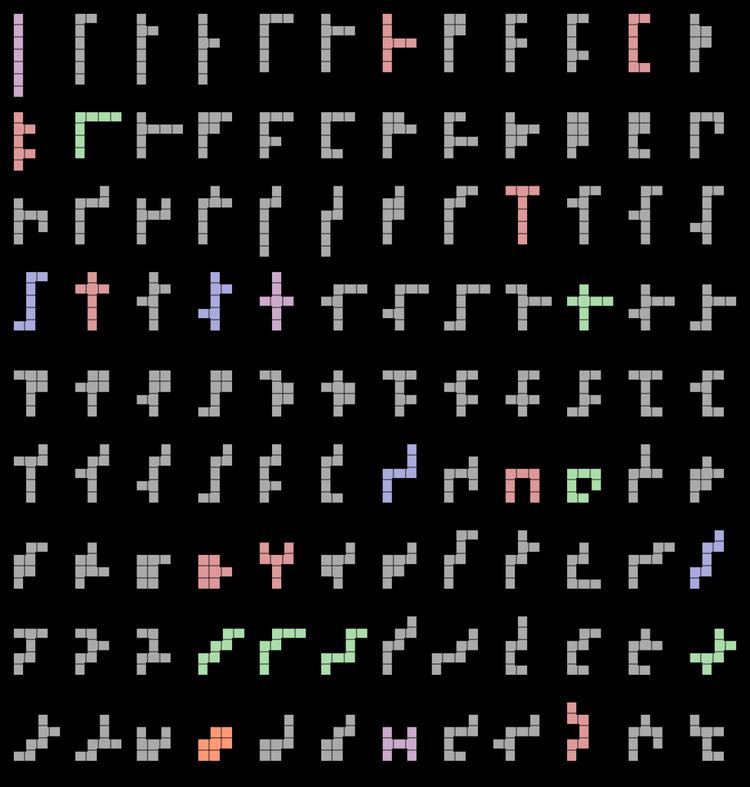 | ||
A heptomino (or 7-omino) is a polyomino of order 7, that is, a polygon in the plane made of 7 equal-sized squares connected edge-to-edge. The name of this type of figure is formed with the prefix hept(a)-. When rotations and reflections are not considered to be distinct shapes, there are 108 different free heptominoes. When reflections are considered distinct, there are 196 one-sided heptominoes. When rotations are also considered distinct, there are 760 fixed heptominoes.
Contents
Symmetry
The figure shows all possible free heptominoes, coloured according to their symmetry groups:
If reflections of a heptomino are considered distinct, as they are with one-sided heptominoes, then the first and fourth categories above would each double in size, resulting in an extra 88 heptominoes for a total of 196. If rotations are also considered distinct, then the heptominoes from the first category count eightfold, the ones from the next three categories count fourfold, and the ones from the last two categories count twice. This results in 84 × 8 + (9+7+4) × 4 + (3+1) × 2 = 760 fixed heptominoes.
Packing and tiling
Of the 108 free heptominoes, 101 satisfy the Conway criterion and 3 more can form a patch satisfying the criterion. Thus, only 4 heptominoes fail to satisfy the criterion and, in fact, these 4 are unable to tessellate the plane.
Although a complete set of the 108 free heptominoes has a total of 756 squares, it is not possible to tile a rectangle with them. The proof of this is trivial, since there is one heptomino which has a hole. It is also impossible to pack them into a 757-square rectangle with a one-square hole because 757 is a prime number.
